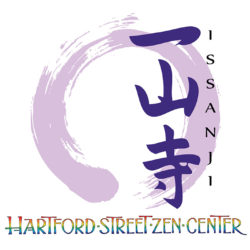In the USA often Sejiki-e is aligned with Halloween having reference to ghosts and departed also associated with O-bon which is in Japan during the Summer.

*O-bon
The memorial services held at Obon have two meanings.
One is to honor the Buddha and show reverence for one’s ancestors and others who have died. The other is to express gratitude to all people to whom we are indebted, including people who are alive such as our parents, relatives, and friends.
The full expression for Obon is Urabon-e which is derived from “Ullabana,” an old Indian word. According to the Bussetsu Urabon Sutra, the origin of this tradition goes back to a ceremony performed by Shakyamuni Buddha for the deceased mother of Maudgalyayana, one of the Buddha’s immediate disciples. Ullabana means “hanging upside down” and it was by means of this ceremony that the suffering of that world in which she lived (the suffering was so intense it was like hanging upside down) was removed.
These days, people think that this ceremony will prolong the life of parents and remove all suffering and anguish. This is also one of the traditional holiday periods in Japan when people exchange gifts. The other traditional time is over New Years. Obon is a ceremony to respectfully honor the spirits of the ancestors; it is also to ask for the long life or our parents. In preparation for meeting the spirits, it is customary to thoroughly clean our house and put ourselves in order as if meeting guests.
*A Ceremony to Comfort the Ancestral Spirits (Sejiki-e)
The Obon Sejiki-e, a ceremony to comfort the ancestral spirits, is an important ceremony in The Soto Zen School. At every The Soto Zen School temple, this ceremony is performed as a way of making offerings to the family ancestors, to one’s parents, relatives, and spirits of other people we are connected with, as well as for spirits that are no longer connected to any living person.
* quoted from: main soto website at sotozen.com
Happy safe and enjoyable Halloween!

